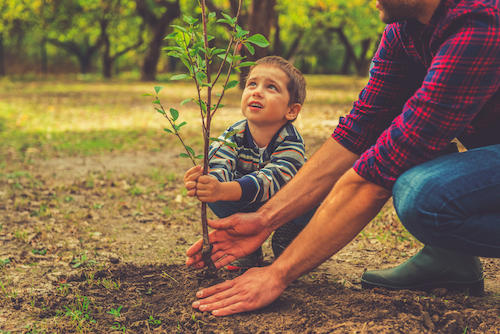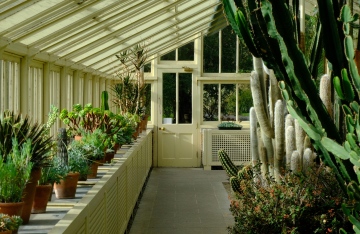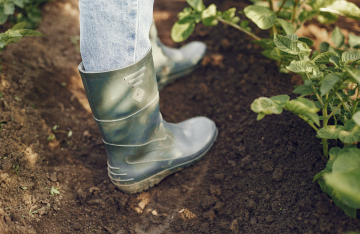Having trees on your property is one of the best things you can do for the well-being of your home and family. There have been numerous studies done on the benefits of trees for mental and physical health, not to mention the curb appeal of your home.
Trees can also have the added benefit of providing food for your family. If you have fruit trees – or other trees for that matter – on your property, you may have wondered if it’s possible to grow a tree starting with just a seed. It certainly is possible! However not every seed will work and it will definitely require some effort on your part. Here are a few hints and tips that will get you started growing your own trees from the seeds up.
First, collect the seeds
The seeds of trees usually ripen in the late fall, around October or November. You’ll want to collect the seeds around this time and store them in a cool, dry place. Remember that if the seeds were to fall from the tree naturally, they would likely spend the winter frozen in the ground before sprouting in the springtime. Your goal will be to recreate these natural conditions as much as you can. What that means is you may have to actually pack your seeds in soil and place them in the refrigerator for several months. It is this cold that actually allows the seeds to germinate for many species; cherry trees, for example, absolutely need to experience cold conditions before they can grow. Certain other seeds are accustomed to warmer climates and should be stored in soil in a warm place to mimic the conditions of summer. Remember also, of course, that these species will require warmer climates to grow in. Discovering the specific needs of the species you have chosen requires more depth than this article is able to go into; you will have to do a little bit of your own research to determine exactly how to prepare your seeds for germination.
Other techniques to assist germination
When seeds initially fall from the tree, they are surrounded by a hard shell that may require your assistance in removing before they can sprout. Often, trees do not require any help in germinating – maple trees, for example, are hard to stop from sprouting – but depending on the species, you may need to work to recreate the conditions the seeds would be left in in the wild. One easy way to break down the hard coat of a seed is simply to soak the seed in water for up to 24 hours. You should use room temperature water unless it’s recommended to do otherwise – again, depending on the species – and soak the seeds in a glass container. You can remove the hard coat of a seed with sandpaper as well. This should be done with great care; if you rub the seed too hard with the sandpaper, you can damage the plant embryo inside the seed and prevent it from growing.
Planting the seeds
Once you have chosen your seeds and prepared them for germination, you can get ready to plant them. You’ll want to make sure you select a location carefully so that your tree will have easy access to all of its needs, including sunlight, water, and nutrients. Different trees thrive in different conditions, with some preferring lower light, some preferring lots of sunlight, and some preferring dryer soils or more clay-filled soils. Where you plant your tree will depend largely on what type of tree you are trying to grow; for example, Cedar trees require particularly sunny conditions with a mixture of compost and native soils. For many trees, you can sprout them into seedlings before moving them to their final homes on your property. Simply start by placing the seeds into paper cups with a bit of compost and potting soil. Keep the soil moist and place the cups on a windowsill with plenty of sun. Eventually, your seeds will sprout and grow into small seedlings! Let them continue to grow until they have reached about six inches in height. At that point, move them to an outdoor location where they will continue to grow for years to come!
Growing the trees
If you’re planting trees on your property, odds are you aren’t just going to plant one. In fact, it’s better to plant multiple trees so that you’ll be able to achieve cross-pollination and ensure that if anything does go wrong with any of the seedlings, you will have others to spare. When planting multiple seedlings, give your trees plenty of room to grow! As the trees become larger and the roots begin to spread, they will need to have space that isn’t crowded by other trees or plant life. Allow at least a five-foot radius around your seedling; more if you’re attempting to grow a larger tree. The rate of growth will depend completely on what species of tree you have chosen; coniferous trees tend to grow quickly, while deciduous trees develop much more slowly. With any tree, they will take years to reach maturity, so planting a tree requires a huge time investment. When the tree is young, you will most likely have to water it often and keep the soil moist. As the tree matures, you will not need to water it as much as it becomes stronger and more easily able to acquire water and nutrients from the environment.
Tree health for life
Growing a mighty tree from a seed is a rewarding experience that you should rightly feel proud of accomplishing. But it’s also an ongoing process and the tree will require regular care throughout its lifetime, which for some trees can be decades or even centuries. You will want to find a reputable tree service to make regular check ups on your tree. Just as people need to see a doctor occasionally, and animals need regular vet visits, trees need their health regularly monitored as well. In the Vancouver area, Mr. Tree is a great choice for keeping your tree healthy




